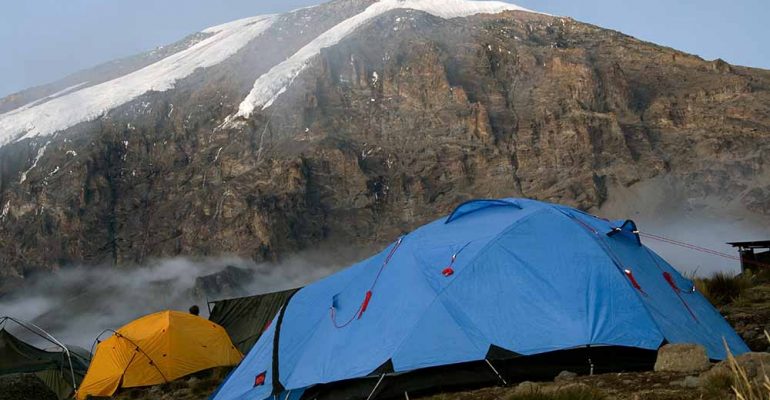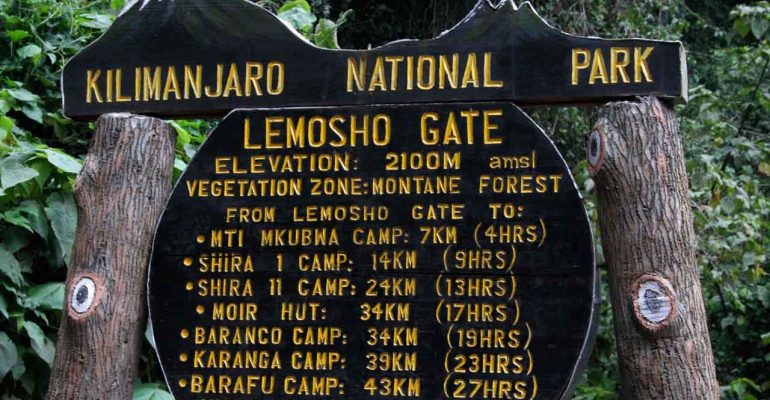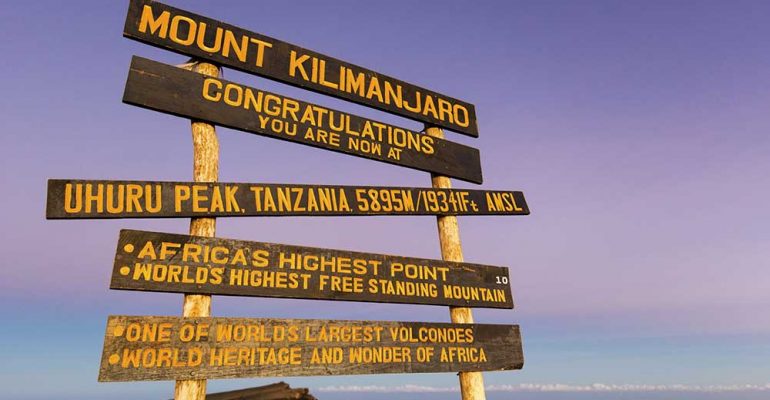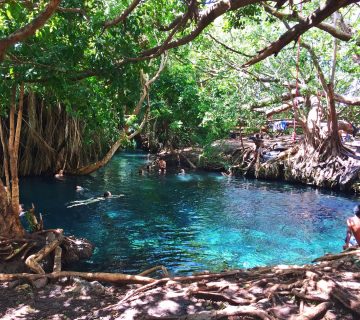



Route description:
Rongai is the only northern route up Kilimanjaro. It will take you past the second-highest point in Tanzania – Mawenzi while offering bird’s-eye views of the mountain’s rainforest. The gentle gradient and its gradual acclimatization bring one safely to the highest point of Africa – Kilimanjaro’s Uhuru peak, at 5,895 m. Rongai Route boasts high success rates of 84 and 94 percent on 6 and 7-day climbs, respectively. Rongai is great for travelers with previous exposure to high altitude and offers an escape from fellow-climbers, as it requires the longest drive before reaching the park gate. Rongai Route will leave you with great impressions while testing your strength over the distance of 65 km (40 miles).
Arrival: Airport to Hotel
Arrival at Kilimanjaro International Airport (JRO), where you will meet our representative, and transfer to the hotel under the rate. The hotel will provide all the essentials for a comfortable stay: cozy rooms, hot water, polite staff, a swimming pool, and Internet access. In the evening there will be a briefing with our managers, who will also make sure you are ready to begin the climb.
Day 1 Trekking from Nalemuru Gate to Simba Camp
A guide and a mountain support crew will arrive at the hotel in the morning in order to meet you and hold a quick briefing, after which you will travel by vehicle to Kilimanjaro National Park’s northern entrance: Nalemuru Gate (2,020 m). After the quick formality of acquiring climbing permits and registering with the search and rescue service, the group will start trekking up to Simba Camp (2,625 m). Your trek this day will be moderate and take you through coniferous forest up Kilimanjaro’s northern slope. Remember not to hurry and always keep a comfortable pace. By the time you reach the camp, our professional mountain crew will prepare everything necessary, put tents and cook dinner for you.
This will be your first day at this altitude, so it is strongly recommended you heed the following instructions from this point on:
- Abstain from consuming alcohol and caffeine
- Drink over 4 liters of bottled water daily (little by little, frequently)
- Take a Diamox pill to help alleviate symptoms of altitude sickness. Most mountain climbers take Diamox in the morning, before they start their ascent, in order to reduce discomfort associated with altitude sickness. We recommend you consult your doctor prior to the trip in case of potential allergies.
At night you may experience discomfort associated with acclimatization to the high altitude: because of a reduction in your waking breathing pattern, your body gets less oxygen than during the day. Taking altitude into account, you may therefore start feeling sick and have a headache. Pay attention to your own body and tell your guide if you start feeling any symptoms of altitude sickness.
Change in Elevation: Nalemuru Gate (2,020 m) — Simba Camp (2,625 m)
Hiking distance: 8 km
Hiking time: 3–4 hours
Day 2: Trekking from Simba Camp to Kikilewa Camp
Early in the morning after breakfast, the group will depart from Simba Camp to start trekking towards your second high altitude camp: Kikilewa Camp (3,630 m) where you can see Kibo Volcano at its finest (barring cloudy weather). This trekking is more physically demanding than the previous one, so once you are in the camp, full rest is recommended.
Change in Elevation: Simba Camp (2,625 m) — Kikilewa Camp (3,630 m)
Hiking distance: 10 km
Hiking time: 5–6 hours.
Day 3: Trekking from Kikilewa Camp to Mawenzi Tarn Camp
Early wakeup, breakfast and the start of trekking to Mawenzi Tarn Camp, which is situated at the foot of Mawenzi Volcano, Kilimanjaro’s second summit. When you reach the camp, you will have lunch and a two-hour rest, after which there will be an acclimatization hike towards Mawenzi Volcano with a 200-meter gain in altitude, followed by a hike back down to Mawenzi Tarn Camp, where you will have dinner in the evening.
Note: The acclimatization hike is an easy trek with a slight gain in altitude done in order to speed up the acclimatization process. You should take the acclimatization hikes very seriously. They help increase your chances of successfully summiting Kilimanjaro and save you from the consequences of altitude sickness.
Trekking from Kikilewa Camp to Mawenzi Tarn Camp:
Change in Elevation: Kikilewa Camp (3,630 m) — Mawenzi Tarn Camp (4,310 m)
Hiking distance: 6 km
Hiking time: 4–5 hours
Acclimatization hike:
Change in Elevation: Mawenzi Tarn Camp (4,310 m) — Destination point en route to Mawenzi Volcano (4,510 m)
Hiking distance: 2 km
Hiking time: 1–2 hours
Day 4: Trekking from Mawenzi Tarn Camp to School Hut Camp
This day will be spent trekking towards School Hut Camp (4,715 m). The landscape will change significantly to give way to a rocky semi-desert. The actual trekking is not very difficult; just remember to stick with an appropriate pace to keep up your strength for the trekking to Kilimanjaro’s summit. When you reach the camp, we recommend you sleep well, avoid strenuous activity, and drink as much as you can, because that very night you will be ascending Uhuru Peak (5,895 m).
Change in Elevation: Mawenzi Tarn Camp (4,310 m) — School Hut Camp (4,715 m)
Hiking distance: 9 km
Hiking time: 5–6 hours
Day 5: Trekking to Uhuru Peak and Descent to Horombo Camp
Night departure from School Hut Camp (4,715 m) and the start trekking to Kilimanjaro’s summit: Uhuru peak (5,895 m). The trekking will be moderate from a physical standpoint, but the altitude presents a much more serious problem. For the entire length of the trekking each pair of climbers will be accompanied by their own guide, who will be monitoring your stamina and mental resolve. After your successful ascent to Uhuru Peak, you can descend to the nearest glacier if desired. Then you will return to Kibo Camp and after a two-hour rest continue your descent to Horombo Camp (3,720 m).
Note: Don’t forget that 90% of all accidents occur during the descent, including all broken arms and legs. Please pay attention to your feet, as there is a high risk of damaging your toenails.
Change in Elevation: School Hut Camp (4,715 m) — Uhuru Peak (5,895 m) — Horombo Camp (3,720 m).
Hiking distance: 21 km.
Hiking time: 12–14 hours
Day 6: Descent from Horombo Camp to Marangu Gate
You will be offered a warm breakfast in the morning, after which we will head for the Kilimanjaro National Park’s exit: Marangu Gate (1,860 m). After your descent the whole group will gather to congratulate you, and then you will have the chance to share your opinions on the trip in the guestbook. Lastly, we will present you with your commemorative certificates (in our office) and provide you a transfer back to the hotel.
Change in Elevation: Horombo Camp (3,720 m) — Marangu Gate (1,860 m)
Hiking distance: 18 km
Hiking time: 5–6 hours








